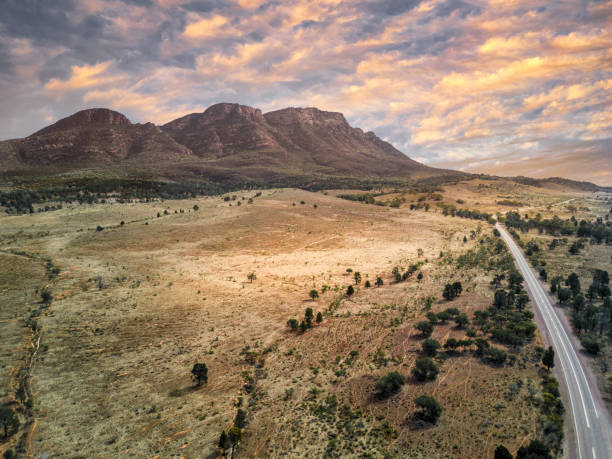When it comes to planning a trip to the captivating Flinders Ranges in South Australia, timing is everything to make the most out of your visit. The best time of year to explore this ancient and dramatic landscape is from late autumn to early spring, spanning from April through to October. During these months, the weather is comfortably cool, providing optimal conditions for hiking and sightseeing. This period avoids the extreme heat of the summer months that can make outdoor activities unpleasant and potentially hazardous.
Weather Considerations for the Flinders Ranges Visit

The Flinders Ranges is an area that experiences a semi-arid climate, meaning it has distinct weather patterns that can greatly affect your travel experience.
- In the summer months, December to February, temperatures can soar above 35°C (95°F), making rigorous activities like hiking challenging and less enjoyable.
- By contrast, the winter months, June through August, offer cooler temperatures of around 16°C (61°F) during the day, while nights can drop below freezing.
- Autumn and spring strike a comfortable balance with mild daytime temperatures averaging between 20°C to 25°C (68°F to 77°F) and cooler evenings.
The reduced rainfall during the cooler months also means you’ll have fewer disruptions during your outdoor explorations.
Wildlife and Flora – When to Witness the Flinders Ranges Spring to Life
Timing your visit to coincide with the regeneration of the Flinders’ flora and the abundance of wildlife activity can greatly enrich your experience.
- Spring, from September to November, is particularly beautiful as the desert environment bursts into bloom following the winter rains, creating a spectacular display of wildflowers.
- This is also a great time for wildlife spotting as animals are more active in the temperate weather.
- Autumn sees the continuation of greenery before the landscape transitions into its dryer, golden hues.
Given these factors, spring and autumn can be the most rewarding times for nature enthusiasts.
Festival and Events: Cultural Highlights Throughout the Year
The Flinders Ranges are not only about nature; the cultural events scattered throughout the year can give visitors an enriched experience of the local atmosphere and traditions.
- The famous ‘Flinders Ranges Outback Epic’ bike race takes place in April, bringing together cycling enthusiasts from around the country.
- Arts and culture take center stage during the ‘Brush with Art’ festival in September and October, where local artists showcase their work.
- Food and wine events, such as the ‘Pichi Richi Railway’ dining experiences, offer unique ways to take in the scenery while savoring local produce.
Aligning your visit with these events can add a festive dimension to your trip.
Off-Peak Travel: Avoid the Crowds and Enjoy the Serenity
Consider visiting during the shoulder seasons – late autumn and early spring – for several reasons:
- The peak tourist season in the Flinders Ranges is during the winter and spring school holidays when Australian families are on break. To avoid larger crowds, opt for times just outside these busy periods.
- Travelling off-peak can also result in lower accommodation prices and a more leisurely pace as you explore the attractions without the rush of peak tourism.
- You’ll find that visiting just before or after the peak season offers the added benefit of witnessing the transition of seasons, which is a spectacle in itself.
By planning your trip in these periods, you’ll enjoy a more tranquil and intimate experience of the Flinders Ranges.
Hiking the Trails: Best Months for Outdoor Activities
For those keen on experiencing the Flinders Ranges on foot, the cooler months are the best time to take advantage of the extensive network of walking trails.
- From the iconic St. Mary Peak to the geological trails around Wilpena Pound, walking conditions are ideal from April through to October.
- Longer day treks and multi-day hikes are more comfortable when the heat is less intense.
- Wildlife is often more visible during the cooler parts of the day, so early morning or late afternoon walks can be particularly rewarding.
Serious hikers may prefer the cooler weather in early spring or late autumn when the temperature is most conducive to challenging hikes.
Conclusion
Choosing the best time to visit the Flinders Ranges largely depends upon your preferences for comfort, interest in local events, and desire to engage with the area’s natural beauty. Late autumn to early spring—April through October—affords a balance of pleasant weather, blooming flora, active wildlife, and cultural festivities without the peak season’s crowds. Whether you’re hiking the rugged trails, observing the vibrant wildflowers, or joining in the lively local events, your visit to this timeless Australian landscape is sure to be a memorable one when timed thoughtfully.
